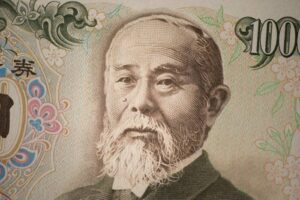AUD/USD and the RBA Interest Rate Decision: What’s at Stake for Investors?
Welcome back to the Extreme Investor Network, where we provide up-to-date insights for savvy investors. Today, we’re taking a closer look at the AUD/USD currency pair and the critical role that the Reserve Bank of Australia (RBA) and its interest rate decision play in shaping market trends. If you’re looking to navigate this financial landscape effectively, you’ve come to the right place!
The Importance of RBA Interest Rate Decisions
Upcoming economic indicators and decisions from the RBA are poised to be central themes for traders in the AUD/USD space. Anticipation is building as economists forecast that the RBA will maintain the cash rate at 4.35% in its next meeting. However, the key player in this narrative will be Governor Michele Bullock. Her insights and comments during the accompanying press conference could significantly sway market sentiment.
Bear in mind that last November, Governor Bullock revealed the Bank’s inflation forecasts, suggesting that underlying inflation is expected to hit the top end of the RBA’s target range (2-3%) by late 2025—and even return to the mid-point by the end of 2026. Nonetheless, she emphasized that the current inflation level remains too high, necessitating a tight monetary policy stance until substantial progress is made.
Key Indicators to Watch
For those navigating the turbulent waters of the forex market, it’s essential to focus on several potential market-moving factors:
- Shifts in the governor’s inflation expectations
- Trends in services inflation
- Labor market statistics
These indicators will be vital in shaping expectations regarding a potential rate cut in Q1 2025. A hawkish tone from the RBA could bolster the AUD/USD pair, possibly pushing it towards the $0.65 mark. Conversely, mounting expectations for a rate cut could see the pair dip towards the $0.63623 support level.
China’s Economic Influence
As any seasoned investor knows, Australia’s economic ties with China are critical. As Australia’s largest trading partner, China accounts for one-third of Aussie exports. Thus, any stimulus measures aimed at boosting domestic consumption or stabilizing the real estate market in China will directly influence demand for the Australian dollar. Keep an eye on updates from Beijing, as they could provide essential clues about the AUD’s trajectory.
For deeper insights into AUD/USD trends and trade data, consider tapping into our resources here at Extreme Investor Network. We delve into the numbers to give you a competitive edge.
US Economic Indicators and Their Impact
Looking ahead, the US session is set to unveil quarterly productivity and unit labor costs, metrics that could indicate shifts in the interest rate differential between the US and Australia. If unit labor costs come in higher than expected, it may dampen speculation about multiple Federal Reserve rate cuts. This can create a favorable environment for the US dollar in the short term.
Investors should be prepared for a more hawkish Fed stance that could challenge the AUD/USD pair’s momentum, particularly through the $0.63623 support level. Conversely, if the market expands its belief in several Fed rate cuts, we might see the upper trend line breached, with targets eyeing the crucial $0.65 mark.
In conclusion, the financial landscapes of Australia and the US are interlinked in ways both subtle and profound. As we anticipate the RBA’s decisions and monitor economic indicators, we advise our readers to stay informed and agile. At Extreme Investor Network, we strive to provide the nuanced analysis you need to make informed investment decisions. Happy trading!

